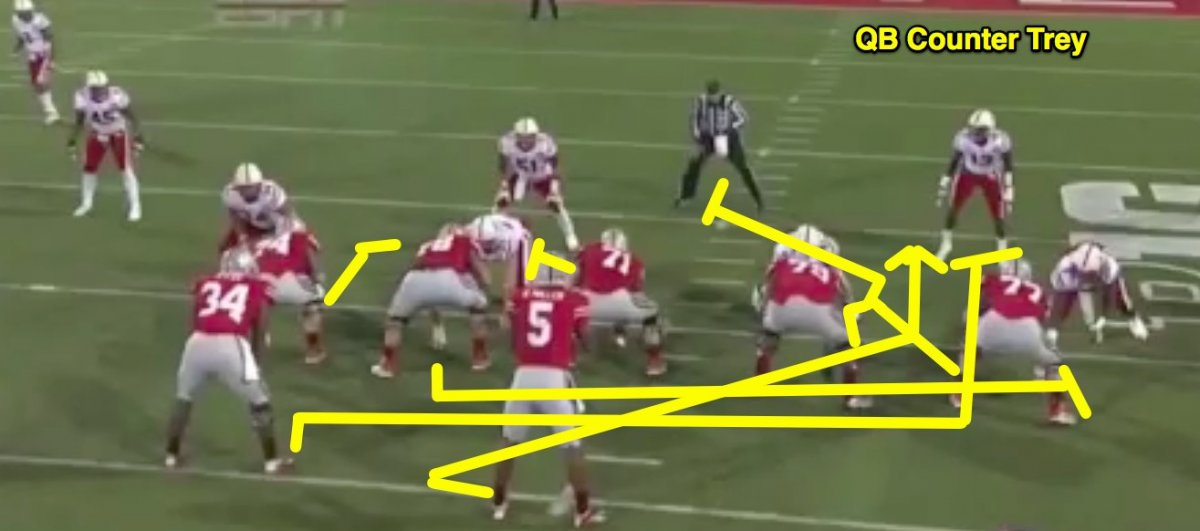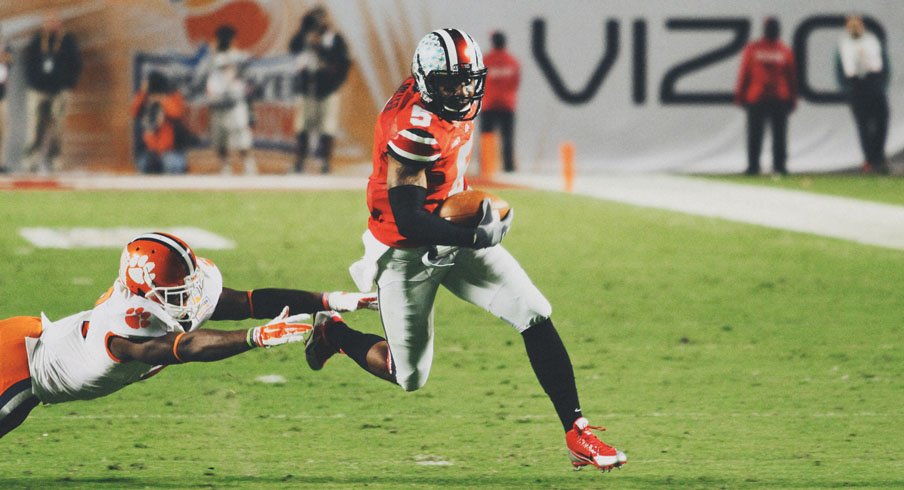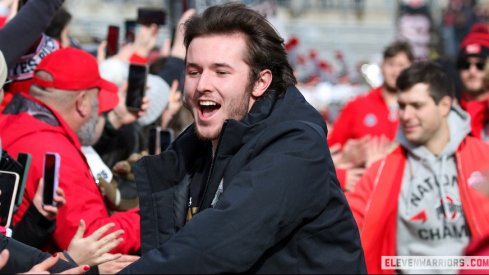The third topic of Ohio State offensive coordinator's Tom Herman's April coaching clinic – after examining packaged plays and the play action passing game – was the quarterback run game.
Why Have a quarterback run game?
The Buckeyes' quarterback run game serves two strategic purposes. First, it provides Ohio State with an additional run blocker. By its nature, the defense has a one man advantage against the offense – the ball carrier's counterpart. In a pro style offense, if the quarterback hands off, the defense gains a two person advantage.
HERMAN'S HEAD: Run-Pass Combinations | Gun Pap Play-Action
Ohio State's quarterback run game eliminates this additional unblocked defender. By using the quarterback as the ball carrier, the offense gains an additional blocker. The Buckeyes can use traditional I formation plays even while spread with three wide receivers, with the quarterback as the tailback and running back as lead blocker.
Second, the quarterback run threat provides a method to get the halfback outside the tackles on jet sweeps. To put it differently, the QB run game inverts the responsibilities of the Buckeyes' base tight zone read. Now it is the quarterback who threatens between the tackles with the tailback on the edge.
Today I'll cover the first aspect of the QB run game – direct snap, lead runs. The Buckeyes have two such plays they regularly rely upon: QB Counter Trey and QB Outside Zone.
QB Counter Trey
Counter trey employs the same gap blocking scheme as power. In so doing it has the side benefit of reducing practice time.
The front side offensive line blocks down, with either the halfback or h-back kicking out the defensive end and the backside guard pulling and leading through the hole. The quarterback takes a false step and then follows his lead blockers.

Ohio State runs QB Counter Trey in one of two ways. The first is as a direct snap play, where the Buckeyes use the halfback as a lead blocker. In so doing the Buckeyes can spread the defense with four wide receivers and still execute two lead blocks.
The second methodcombines the two purposes cited above. OSU uses the H-Back as the second lead blocker and the halfback runs a jet sweep away from the counter trey action. The QB can either keep or give to the jet sweep.
Outside Zone (QB Sweep)
The other ubiquitous lead quarterback run used by Ohio State is a lead outside zone. As the name states, the offense blocks outside zone.
The offense line takes a lateral step towards the call. As with any zone play, the line seeks to create double teams on the defensive linemen. If a linemen is covered he will punch the defensive linemen with his arm that is away from the call, seeking to hold that defender until his uncovered counterpart reaches him and establishes a double team. The covered linemen will then release to the second level linebacker. The halfback leads on the strong safety or first defender to show.
Putting the Ball in the Hands of Your Playmaker
Both plays are a simple way to get the football to the quarterback with lead blockers at the point of attack. It should come as no surprise that Urban Meyer and Herman have heavily relied upon these plays with Braxton Miller.
This was especially true in tight spots with the game on the line. When in doubt, Meyer and Herman have put the ball in Miller's hands with run plays. No example is more famous or infamous then the unsuccessful last drive against Michigan State. On third down, the Buckeyes ran counter trey. Then most remember the failed outside zone on fourth and short.

Although these plays left a sour taste for many it should not diminish the continued importance of the schemes to the Buckeye offense. While Meyer and Herman will likely be chary in their use of Miller as a runner this season, when the game is on the line such plays will again likely be called upon.


